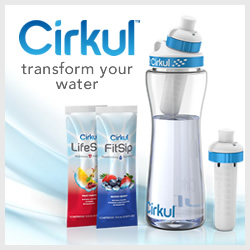 Who would have thought you might be able to eat your way out of a heart attack! Guess that adds a new idea of “eat your heart out.” Lets look at some facts and then get into the great news! Cardiovascular disease is the #1 killer of men and women in America, and over 831,000 people die of cardiovascular disease each year in the US.
Who would have thought you might be able to eat your way out of a heart attack! Guess that adds a new idea of “eat your heart out.” Lets look at some facts and then get into the great news! Cardiovascular disease is the #1 killer of men and women in America, and over 831,000 people die of cardiovascular disease each year in the US.
The most common type of heart disease in the US is coronary artery disease (CAD), which can lead to a heart attack. Coronary artery disease happens when plaque builds up in the arteries that supply blood to the heart. Plaque is made up of cholesterol that builds up over years in the arteries. If the plaque build up becomes excessive it can eventually limit the amount of blood that makes it to the heart. This can cause angina, (chest pain), to a complete stoppage of blood flow to the heart causing a heart attack. Some people never know they are at risk until the day of the heart attack and less than 10% of the people who suffer cardiac arrest outside of the hospital live through the event.

Probiotics Can Help
Believe it or not probiotics can help lower cholesterol. Research has shown that probiotics can help lower blood cholesterol by three different methods:
- Probiotics create acids that help to block cholesterol production. The acids that probiotics create, i.e. proprionic acid, reduces production of cholesterol by the liver.
- Probiotics aid in the break down of bile acids. Normally the liver recycles bile acids and uses them over and over. Because probiotics break down bile acids it causes the liver to have to make new bile acids. Guess what, the liver uses cholesterol in the making of bile acids, helping to lower the total cholesterol in the body.
- Probiotics love cholesterol since they use cholesterol for nourishment. 🙂
How many of us think we are eating healthy, but are probiotics a part of our daily diet?
What Kind of Probiotics
Research has shown two main types of common probiotics help, lactobacilli strains and bifidobacteria. Common probiotics often contain a variety of these two strains. In the research done it did not take a lifetime to see results. The study showed 11.6% lower levels of blood cholesterol LDL in just nine weeks. In the research the active group was given probiotics twice a day.
That sounds great to know that by just taking probiotics twice a day you can affect your bad LDL cholesterol levels. There is a level of caution when taking probiotic supplements for the first time, The First Step To Better Health. But did you know you don’t have to take pills to get probiotics?
Eating Probiotics, Lacto-fermented Foods
Lacto- what foods. You know them better by common names like, yogurt, kefir, sauerkraut, pickles and other fermented foods. These foods contain probiotics and acids that perserve these foods naturally. So eating these probiotic rich foods can replace the probiotic pills, which is better because the foods often contain higher numbers and stronger cultures of probiotics than any pills sold. Some experts in the field estimate 5 to 10 times higher probiotic counts in lacto-fermented foods vs probiotic pills.
Here is the kicker. These probiotics are completely natural and in their native enviroment, FOOD! Talk about bio-available. You will not find a better way to get probiotics into the body than having them be part of the food you eat. Is this easy or what?!
But there is one catch, the foods have to be un-pasteurized. Sadly most of today’s versions of these foods have been pasteurized and in the process the probiotics are killed. Don’t dismay, there are some places you can still get real lacto-fermented food products. Look to your kitchen. We have heard the saying, “if you want things done right you have to do it yourself.” Well that holds true with lacto-fermented foods.
Make Your Own Lacto-fermented Probiotic Rich Foods
Making your own lacto-fermented foods that are very rich in probiotics is easy. How about some homemade yogurt that is many times healthier than store bought. Did you know that many store bought yogurts are often pasteurized before they are shipped to the market. Those long self lives in the supermarket show the products have been changed in someway. Yes it is true, many of the popular brands contain very low amounts of live cultures. Yogurt should contain vast amounts of lacto-bacilli. It is very simple to make your own yogurt at home with out a special maker, check out this recipe, “Homemade Yogurt “The Easy Way”.
There are many other great foods that can be made at home that will be packed full of probiotics. How about some sauerkraut? This is a very easy to make first step into lacto-fermented foods, “Best Ever” Lacto-fermented Sauerkraut. Let me share a secret with you, just about any vegetable can be lacto-fermented easily with The Original Veggie Fermenter.
Want to watch homemade yogurt, sauerkraut, and other great foods being made from right in your own home? Check out the eCourse on lacto-fermenting. You will learn how to become a lacto-fermenting expert in an afternoon.
People ask me how do we eat so many lacto-fermented foods. It is easy, most all condiments can be lacto-fermented, such as pickles, hummus, BBQ sauce, peppers, onions, asparagus, green beans, and even garlic can be lacto-fermented. This list just keeps on going. Drinks can even be lacto-fermented, wow a healthy natural soda with a lot less sugar.
You will find that lacto-fermenting requires very basic tools (no power needed) to make great tasting probiotic filled foods. These foods always taste better than the probiotic pills, :). Need lacto-fermenting supplies, cookbooks or eCourses, well they are right at hand.
I don’t know about you but I always like eating my way to better heath!
Sources:
Centers for Disease Control and Prevention: Heart Disease
Probiotic twice a day zaps ‘bad’ cholesterol, could prevent heart disease
Potential of probiotics in controlling cardiovascular diseases




I am interested in starting to make my own lacto-fermented foods (yogurt and using the whey to make other foods) but I do not have access to raw milk. If I use pasteurized or lightly pasteurized milk, am I getting any of the health benefits or not since you said “the foods have to be un-pasteurized.” If I make my own yogurt (and use that to obtain whey) but I use pasteurized milk, am I defeating the purpose? Or does the process of making my own yogurt ‘create’ probiotics in it?
Rachel, When I mentioned UN-pasteruized I was speaking to after the food has been fermented, ie. most yogurt is pasteurized after it is cultured (fermented). These yogurts would not contain any live beneficial bacteria to pass on to the consumer. The process of making yogurt we have on the site actually pasteurizes the milk before adding the yogurt culture, this must be done to remove the competing bacteria that could interfere with the yogurt culture. So whey obtained from any yogurt you would make would contain live bacteria which were grown after pasteurization. For milk sources I would find a milk that was of good quality that had not been ultra high temp pasteurized, (UHT), yogurt does not culture very well in UHT milk. Sadly most organic milk is UHT, it will say it on the front of the carton. Hope that helps. — Jeff